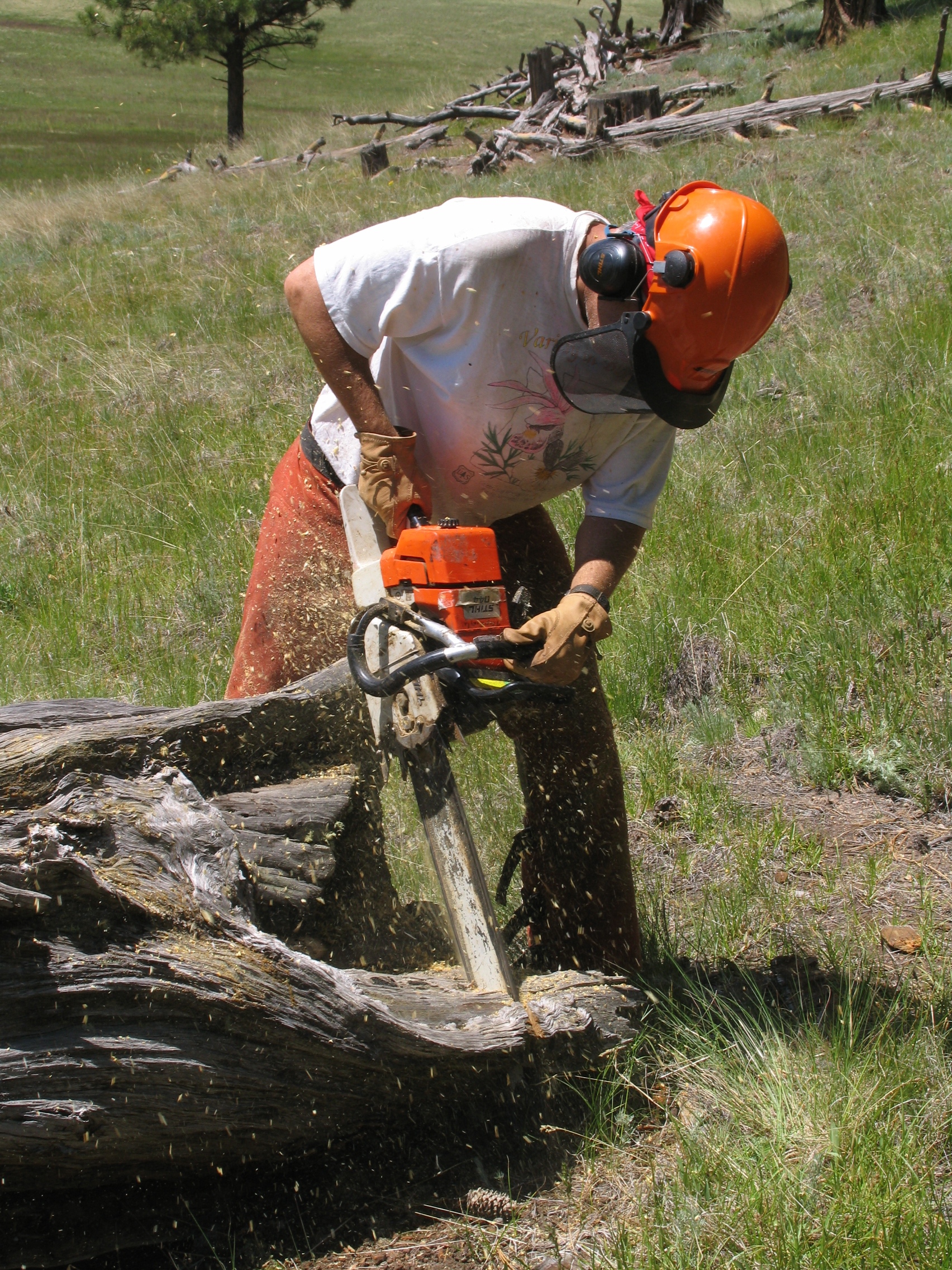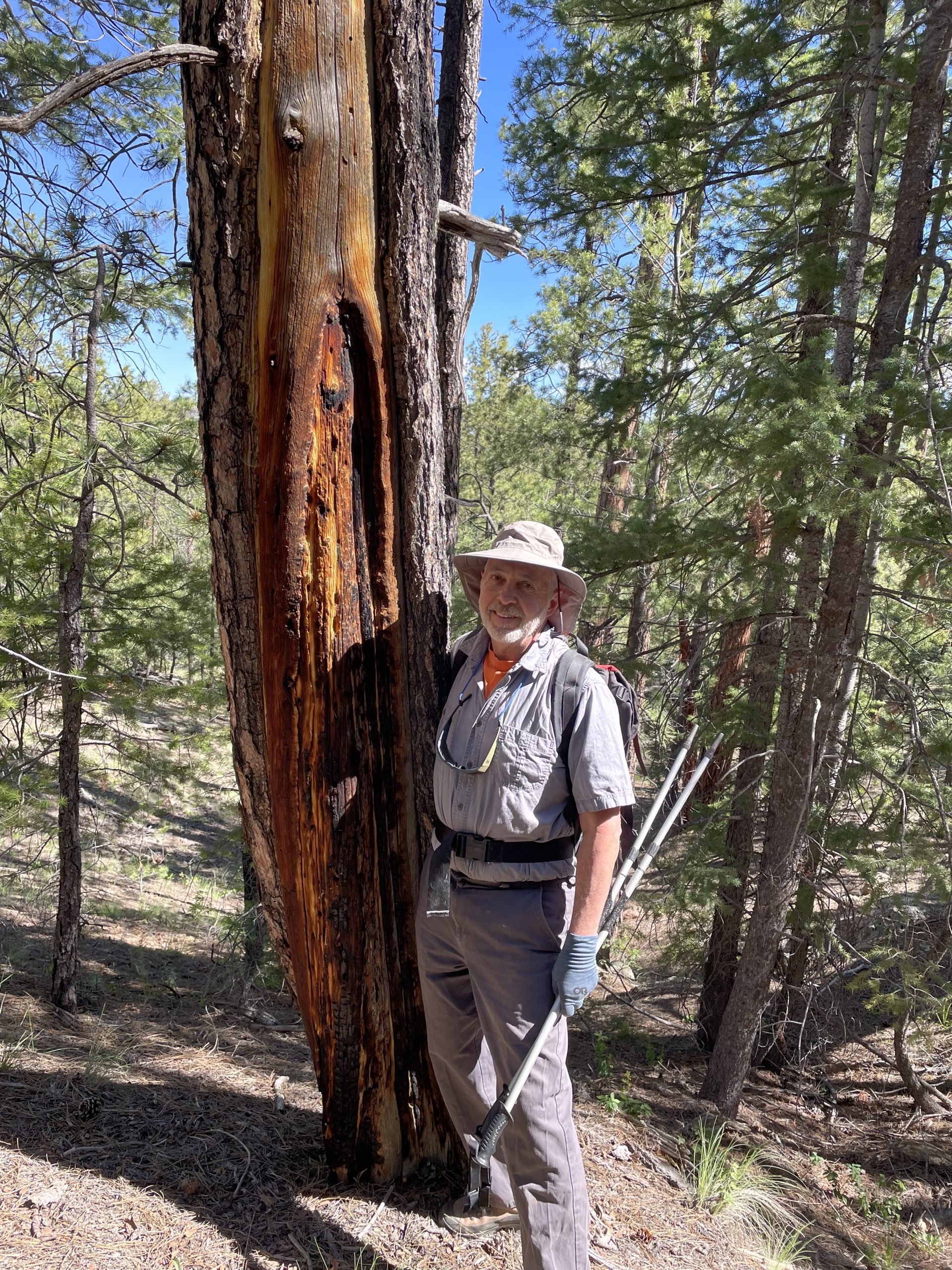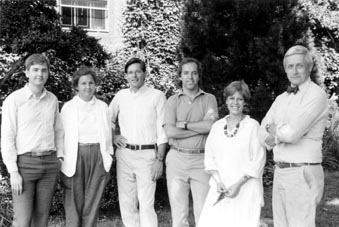Don Falk
Throughout the year CPC, highlights individuals from our network who are doing meaningful work to save plants from extinction. Known as our Conservation Champions, these practitioners and conservation advocates are at the forefront of our fight to save imperiled plants–protecting plants and our planet for the benefit of all. Our January Conservation Champion is someone who has been a part of our organization’s journey from the very beginning: CPC co-founder, Dr. Don Falk. As graduate students in the early 1980s, Don and fellow CPC co-founder Frank Thibodeau had the visionary idea to establish an organization dedicated exclusively to rare plant conservation and helped develop partnerships and collaborations that have shaped and contributed to the long-term success of CPC. Following 10 years with CPC, including serving as our first Director, Don moved into the field of restoration ecology studying Ecology and Evolutionary Biology at the University of Arizona, where he now serves as a Professor in the School of Natural Resources. We are immensely grateful to Don and all those who supported and believed in the vision for CPC forty years ago–thank you for your work to save plants!
When did you first fall in love with plants?
Growing up, I spent much of my time outdoors in Pennsylvania and during summers in New England. I loved the solitude of being out in the woods and listening to the sounds of nature. As time went on, I started paying closer attention to the details, and as I learned to identify what I was seeing while out in nature, it was always plants that captured my attention. By my 20s, I had formed a deep and lasting bond with the natural world. It wasn’t an intellectual endeavor at first, it was just where I wanted to be and spend time.
Plants have always been a means for me to see something bigger than myself, and even human society. They are a vivid reminder of the diversity of life that surrounds and sustains us. The more attention we pay to how miraculous plants are—how they work to capture and store energy, the key ecological roles they play, their role as food sources, and more—the more remarkable they become. They are quiet and humble, yet so extraordinary. As I started to study plant science, I had many astonishing moments understanding how miraculous plants are, and the amazing role they play for the entire planet.

What was your career path to CPC?
Turning my passion for plants into a career really developed when Frank Thibodeau and I were friends and graduate students at Tufts University. We were both interested in what, at the time, people were calling conservation strategies. That is, we asked: how can we develop approaches to conservation that were not simply reactive but could instead get us ahead of the game. We did our own informal gap analysis to assess the areas of need in conservation programs. It didn’t take us long to recognize that a major gap in conservation programs at the time was the lack of emphasis on plant diversity. It really astounded us that the organisms that are the foundation for all life on Earth were not represented in the conservation field to a degree commensurate with their importance. At the time, most conservation groups were working to protect places or charismatic animals, which was and remains absolutely essential, but plants had strangely been left off to the margins.
We decided to help fill that need and saw it from an entrepreneurial perspective–an opportunity to do something new, different, and interesting. Organizations like IUCN, World Wildlife Fund, and The Nature Conservancy all had programs that were beneficial to plants in certain capacities, and the Endangered Species Act had passed in 1973, so it’s not that plants were being neglected entirely, they just weren’t the central focus of any organization at that time.
It’s profoundly important to acknowledge that we didn’t do this work alone. CPC would not have happened if it weren’t for the help of many people, including the founding Board members Richard Phippen, Bill Truslow, Phebe Miner, Hal Coolidge, Elliot Forbes, George McCully, and Joe Breiteneicher. Other key early Board members included Mary Ann Streeter, Dorothy Wallace, Mary and Sam Cooke, Bob Blucke, Patty Bush, Marty Rosen, Janet Poor, Paul Hawken and Bob Cook.
In the same way, the leaders of our early group of botanic garden and arboretum affiliates were absolutely key to building the organization, including Peter Ashton (Arnold Arboretum), Bill Brumback (New England Wildflower Society), Jon Shaw (NEWFS and Bok Tower Gardens), Peter White (University of North Carolina Botanical Garden), Robert Breunig (Desert Botanical Garden), Keith Woolliams (Waimea Arboretum), George Briggs (North Carolina Arboretum), Brian Parsons (Holden Arboretum), Tom Elias (California Botanic Garden) and of course Peter Raven at Missouri Botanical Garden. Some key plant conservation scientists joined our Advisory Council to provide scientific guidance, including Bob Jenkins, John Fay, Bob DeFilipps,Tom Lovejoy, Grenville Lucas, and Bruce MacBryde. People in the funding community, such as Bill Robertson at Andrew Mellon Foundation, and Hank Foster at W Alton Jones Foundation, and many others including the MacArthur, Pew, Dodge, Gund, Hewlett, Surdna, and Packard Foundations were willing to believe in the idea, and I think we did well by them. Organizing and engaging support for this new organization and this common goal to conserve rare plants was a large part of our job in the early days of CPC. That task was carried forward by a very dedicated staff, including Linda McMahan, Kerry Walter, Peggy Olwell, Mike O’Neal, Nancy Gibson-Nash, Linda DeBruyn, Jenna Klein, Golda Kagan, Pam Thompson, and many others. And of course, we have been hosted generously by very distinguished institutions, including the New England Wildflower Society (CPC’s original organizational host/financial custodian), the Arnold Arboretum of Harvard University, Missouri Botanical Garden, and now the San Diego Zoo Wildlife Alliance.
By the way, it’s fascinating to note that at our first Board meeting in 1984, we set a goal of having roughly 10% of species that were then thought to be endangered in protection. With over 2,600 species now in the National Collection, CPC and its collaborators have achieved much more than that! In addition, I’m also proud that we played a key role in establishing plant conservation networks in Australia and China on the CPC model.
CPC was really grown by a good-sized village–board members, staff, Participating Institutions, and funders–an entire community who helped build it from the original core idea to bring people and plants together.
What have you been doing since leaving CPC?
During my ten years of more or less total immersion in CPC and rare plant conservation, I was intrigued by the relationship of rarity to the quality of habitat where plants live, so much of which was increasingly degraded. This brought me into the field of restoration ecology, which is the art and science of healing damaged ecosystems. I was involved early in the formation and growth of the Society for Ecological Restoration (SER), and later became their first Executive Director. Like CPC, SER is the main professional organization for people in the field; they also publish the lead journal, Restoration Ecology, and hold annual national and international conferences. This felt like a very natural progression, from protecting individual plant species to restoring their habitat.
Eventually, I decided it was time to return to graduate school for a PhD, which I had literally been too busy for since CPC began. By now, I was also married to botanist Mima Falk and had started a family. I ended up selecting the University of Arizona where Mima was working for the Coronado National Forest, and I pursued my degree in Ecology and Evolutionary Biology, using tree-rings at the venerable Laboratory of Tree-Ring Research to reconstruct historic fire regimes in the Southwest. After graduating I was hired as a faculty member and have been at UA ever since. Increasingly my work focuses on forest resilience: what gives forested ecosystems the ability to adapt to climate change, severe wildfires, and other stressors? I collaborate with scientists all over the country who are interested in this question, including practitioners and holders of Indigenous Knowledge about the cultural practices that maintained what we now think of as old-growth ecosystems.

In your experience, how has the field of plant conservation changed in the 40 years since CPC’s founding?
In conservation generally, but certainly for plants, the threats to nature have become more generalized, rather than localized and site-specific. At the time, for example, we were more concerned the development of a natural area into a shopping center or highway, or some localized source of agricultural runoff, or over-collecting of plants. This doesn’t mean we weren’t aware of climate change, invasive species, and other more generalized threats, but they weren’t at the forefront of our thinking at the beginning. Even at the beginning, CPC started asking what we could do to preserve multiple populations of a species of concern, and how genetically different those populations were. This question of genetic diversity within and among populations led to a conference at Missouri Botanical Garden in 1989, and subsequently to the first book on the genetics and the conservation of rare plants (Genetics and Conservation of Rare Plants, Falk and Holsinger, Oxford University Press 1991). This was a big step for CPC into the underlying science of plant conservation, and it was gratifying to have leading geneticists contribute to that and the work that followed, such as the first rare plant collection guidelines based on population biology. I feel enormously proud that CPC helped open the door to rare plant conservation genetics at the time.

Other more systemic threats have come into the picture since CPC began, particularly the increasing area affected by wildfire, the adverse impacts of invasive plants, and the pervasive effects of climate change. With climate change, we can no longer assume that protecting a plant population at a particular location is a sustainable strategy, because those sites may become unsuitable over time. Probably the biggest strategic shift in the world of plant conservation at present is the recognition that reintroduction and translocation need to be part of the strategy in some cases. CPC was ahead of the curve on this topic with our book on rare plant reintroductions (Restoring Diversity, Falk, Millar, M Olwell, Island Press 1996), and CPC’s botanic garden partners are perfectly positioned to play a role in this strategy because they have the ability to study and grow the plant material.
We never wanted botanic gardens to be the only home for the plant material, although of course we wanted to have long-term seed banks, and it’s amazing to see how that technology has developed and grown. In my view, the ultimate role of CPC is to complete the circle and help get the plants back out into the wild; we called this “integrated conservation strategies.” Beyond that, the member botanical gardens and arboreta provide an exceptionally effective role in public education, which has always been one of the pillars of their work. As the challenges to plants have shifted, we now require different solutions. CPC is positioned to play a unique contributory role in this new plant conservation landscape.
What emerging initiatives, technologies, etc. are you most excited about for the future of conservation?
Plant genetics has advanced greatly since the early days of CPC, allowing us to better understand how much variation there is among a species, and their ecological and evolutionary context. This line of research lets us look under the hood of a species–what makes it tick, and how it operates–which is key to conservation because we have to understand how a plant operates in the world ecologically and what its niche is. We have much more advanced tools today versus 40 years ago to better understand ecological genetics, but there’s still a great need to research and apply it to all the endangered plants of the U.S.
The near-term future of conservation is not so much about technology as it is about how and where to apply the tools we have. What I mean by that is the role of CPC in helping ensure a future for rare plants in the wild, not only in seed banks and botanic gardens, but also getting species back to stable footing in the wild. That means enhancing or reintroducing populations, or looking to put species in a habitat where they haven’t been recorded before, but where the habitat is suitable now or becoming suitable due to climate change. These are important advances in the field of plant conservation.
What has surprised you about working with and learning more about rare plants?
I’d say it has to do with evolution. We often hear people say rare plants are on their way out, they’re dying out because they don’t have the capacity to survive in our world. This implies that rare species are old, adapted to some earlier environment. What intrigues me is that there’s a very good chance that many of the rare plants we see are, in fact, newly evolving species. Young species are by definition rare at the beginning of their evolutionary divergence; then they expand to become more abundant. We don’t know how many rare species today are newly evolving, suggesting they are at the leading edge of evolution, not the trailing edge. It takes a lot of hard work on the evolutionary biology of a species to answer this question, but the possibility is intriguing that some of these species represent the leading edge of evolution and an essential element of conserving biodiversity.

What advice would you give to those who wish to learn more about conservation and how they can help save imperiled plant species?
I’ll answer by going back to where Frank and I were at the very beginning and say trust your ideas and trust your instincts. If you see something interesting that you think nobody else is doing and that you think is worth exploring, then don’t be talked out of it too easily. We could have easily concluded (and in fact were told by a number of distinguished people we consulted) that the idea for a plant-centered organization wasn’t going to work. Luckily, we didn’t listen to that advice. You have to be passionate and be willing to try something new, even with the possibility of failure.
Another important lesson from the work that Frank and I did in the founding of CPC is not to try to go it alone. Find friends, partners, and colleagues who see the world the same way you do, and who want to try solving the same kind of problem and build yourself a community. This has really been a strength of CPC all along–it wasn’t just two graduate students who thought they had a promising idea; it was and remains the creation of countless people who contributed to this idea and made it better.